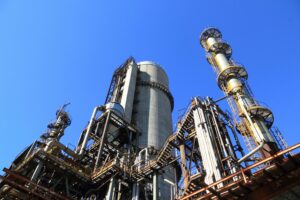
Ammonia (NH₃) plays a crucial role in the global agricultural sector, especially in the production of fertilizers. Its high nitrogen content makes it an essential component in the creation of nutrient-rich fertilizers that support plant growth and enhance crop yields. This blog delves into the importance of ammonia in the fertilizer industry, its various applications, and how it contributes to sustainable agriculture.
1. Importance of Ammonia in Fertilizers
Ammonia is a key building block for nitrogen-based fertilizers. Nitrogen is one of the primary nutrients required for plant growth, as it is a fundamental part of amino acids, proteins, and chlorophyll. By providing a readily available source of nitrogen, ammonia-based fertilizers help improve soil fertility, resulting in healthier crops and higher agricultural productivity.
2. Production of Ammonia for Fertilizers
Ammonia is synthesized primarily through the Haber-Bosch process, which combines nitrogen from the air with hydrogen derived mainly from natural gas (methane) under high pressure and temperature in the presence of a catalyst. The resulting ammonia can be used directly or converted into other nitrogenous compounds to produce a variety of fertilizers.
3. Types of Ammonia-Based Fertilizers
There are several types of fertilizers derived from ammonia, each serving different agricultural needs:
- Anhydrous Ammonia: This is the purest form of ammonia, applied directly to the soil. It is highly efficient but requires careful handling due to its gaseous state under atmospheric conditions.
- Ammonium Nitrate: Produced by reacting ammonia with nitric acid, ammonium nitrate is a popular fertilizer due to its high nitrogen content and solubility in water, making it readily available to plants.
- Ammonium Sulfate: Created by reacting ammonia with sulfuric acid, this fertilizer provides both nitrogen and sulfur, essential for plant growth.
- Urea: Formed by reacting ammonia with carbon dioxide, urea is the most widely used nitrogen fertilizer worldwide. It has a high nitrogen content and is easily transported and stored.
4. Application of Ammonia in Fertilizers
The application of ammonia and its derivatives in fertilizers is versatile, catering to various agricultural practices:
- Direct Soil Injection: Anhydrous ammonia is directly injected into the soil where it reacts with water to form ammonium ions, which are absorbed by plant roots. This method is highly efficient but requires specialized equipment due to ammonia’s gaseous state.
- Granular and Liquid Fertilizers: Ammonium nitrate, ammonium sulfate, and urea are often used in granular or liquid form. They can be applied using standard spreading equipment, making them suitable for a wide range of crops.
- Foliar Feeding: Some ammonia-based fertilizers can be dissolved in water and applied directly to plant leaves. This method provides a quick nutrient boost, especially in cases of nutrient deficiencies.
5. Benefits of Using Ammonia in Fertilizers
- Enhanced Crop Yield: By supplying an essential nutrient, ammonia-based fertilizers significantly increase crop yields, supporting global food production.
- Cost-Effective: Ammonia production is relatively cost-effective, making it an affordable source of nitrogen for farmers worldwide.
- Sustainability: Proper use of ammonia-based fertilizers can contribute to sustainable agriculture by optimizing nutrient use and minimizing environmental impact.
6. Environmental Considerations
While ammonia is crucial for modern agriculture, its use must be carefully managed to avoid environmental issues such as:
- Eutrophication: Excessive use of nitrogen fertilizers can lead to nutrient runoff into water bodies, causing harmful algal blooms and water quality degradation.
- Greenhouse Gas Emissions: The production of ammonia, especially using natural gas, contributes to greenhouse gas emissions. However, advancements in green ammonia production using renewable energy sources are being explored to mitigate this impact.
7. Conclusion
Ammonia’s role in the fertilizer industry is indispensable, providing the nitrogen necessary for healthy plant growth and supporting global food security. Its various applications, from direct soil injection to foliar feeding, make it a versatile and valuable agricultural input. However, responsible usage and continued innovation in ammonia production are essential to ensure environmental sustainability and the long-term success of the agricultural sector.





